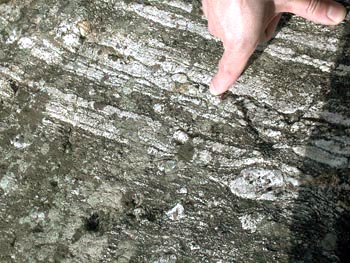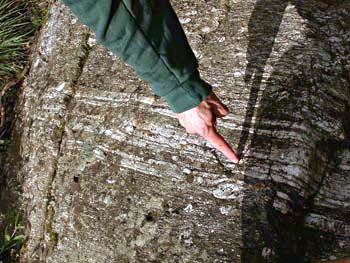|
|
|
The banding becomes thicker
We are now further into the heart
of the dome and are looking at rocks
which were buried even deeper and subjected to higher temperatures
and pressures.. Many of the stripes are now thicker with a more
pronounced contrast in darkness and lightness and with sharper edges.
|
| |
The range of metamorphic
grades
All these features indicate that compositional
segregation has progressed to a higher degree. The composition of
the rocks is similar to the last two locations, with feldspathic leucosomatic
(light coloured) granitic bands alternating with thin bands of biotite.
|
| |

|
| Close up of the
high grade gneiss |
|
 |
| Broad bands of dark and light
rock are typical of higher grade gneiss |
| |
Controls on metamorphic
grades
The amount of pressure and the temperature
reached (called the grade of metamorphism) controls the degree of
change in the rock. A higher amount of recrystallization, with coarser
textures and more pronounced and wider banding reflecting higher grades.
There are some areas where partial melting
has taken place with a return to granite, a process of anatexis |
| |
| |
| |
|
